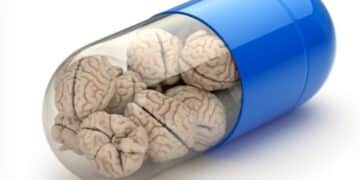Applied Behavioral Analysis (ABA) therapy is a method aimed at helping individuals enhance behaviors and skills using reinforcement techniques. This form of therapy is well known for its effectiveness in addressing conditions like Autism Spectrum Disorder (ASD), Attention Deficit Hyperactivity Disorder (ADHD), and other issues impacting cognitive, social, and emotional growth. Recognizing the link between ABA therapy and these conditions is crucial for parents, educators, and professionals seeking treatment approaches.
Understanding Neurodevelopmental Conditions
Neurodevelopmental conditions encompass a range of disorders that primarily affect the system’s and brain’s development. These conditions typically emerge during the period. This can lead to personal, social, academic, or occupational difficulties. ASD stands out as a recognized condition characterized by challenges related to social communication and repetitive behaviors.
Meanwhile, disorders like ADHD symptoms such as inattention, hyperactivity, and impulsivity.
The prevalence of disorders has been on the rise over time, underscoring the need for interventions like ABA therapy. These conditions can significantly impact the lives of individuals affected by them as well as their families, emphasizing the importance of accessible therapeutic solutions.
What is ABA Therapy?
ABA therapy is a form of therapy that follows behaviorism principles, highlighting the environmental impact on behavior. This approach involves implementing interventions to teach and reinforce desired behaviors while decreasing ones. It focuses on breaking skills into steps and utilizing reinforcement to support progress. ABA therapy is personalized to each individual, considering their strengths, challenges, and interests. It is applied in settings like homes, schools, and communities to enhance skill development and the quality of life for those with disorders.
How ABA Therapy Helps Individuals with Neurodevelopmental Disorders
Tailored Treatment Plans
One key aspect of ABA therapy involves creating treatment plans that cater to the requirements of each individual. These plans are crafted based on assessments that take into account the person’s strengths, weaknesses, and personal objectives. By tailoring interventions, practitioners ensure that their strategies are relevant and beneficial in the individual’s life.
Enhancing Skills and Behavior Adjustment
ABA therapy utilizes methods to facilitate skill development and behavior modification.
This involves breaking down skills into manageable components through task analysis and shaping to reinforce successive approximations of desired behaviors. For individuals with disorders, this structured method can be beneficial in teaching social, academic, and daily life skills.
Utilizing Data for Decision-Making
A core aspect of ABA is its focus on collecting and analyzing data. Practitioners consistently monitor progress and gather information on behaviors to assess the impact of interventions. This data-centric approach enables therapists to make choices, modify treatment plans as needed, and ensure clients progress toward their objectives.
Involvement of Parents and Caregivers
ABA therapy acknowledges the role that parents and caregivers play in the growth of children with disorders. Therefore, ABA professionals frequently collaborate with family members, providing them with the tools and strategies to support their child’s behavioral advancement at home. This collaborative effort nurtures an atmosphere of development.
Promoting Generalization and Integration into Communities
ABA therapy aims to teach new abilities and ensure that individuals can apply these skills in various environments. For instance, a person might learn skills in therapy sessions and then use them in different settings, like school or community events. This generalization plays a role in fostering independence and improving functioning in everyday life.
The Impact of ABA Therapy
Studies have shown the effectiveness of ABA therapy for individuals with conditions, especially those diagnosed with Autism Spectrum Disorder. Early and intensive ABA intervention can enhance communication, social abilities, and academic performance. Additionally, many children who undergo ABA therapy exhibit decreases in challenging behaviors such as aggression or self-harm.
The success of ABA therapy is attributed to its approach and reliance on empirical evidence. Rooted in measurable data, ABA has emerged as a treatment method for neurodevelopmental disorders in both clinical and educational environments.
Obstacles and Considerations
While ABA therapy has proven effective for individuals, it is not without its challenges and critiques. Concerns have been raised about the demanding nature of ABA programs, particularly those requiring extensive therapy hours that may overwhelm the child. Furthermore, discussions have arisen regarding the emphasis on compliance and behavior modification, which has sparked debates about prioritizing conformity over individuality.
When families are considering ABA therapy, it’s crucial to find practitioners who value a rounded approach that honors each client’s uniqueness. Prioritizing the enhancement of quality of life and the child’s happiness should always be central to any ABA intervention.
Looking Ahead in ABA Therapy
The field of ABA therapy is constantly progressing, with research and advancements leading to enhancements in practice and accessibility. One promising direction involves integrating technology like apps and teletherapy alongside ABA methods. These tools enable real-time data collection and offer support, making therapy more reachable for families regardless of their location.
Furthermore, a growing focus is on combining positive behavior support principles and mental health perspectives into ABA practices. This comprehensive approach prioritizes the individuals’ well-being and quality of life, ensuring that therapy is effective and empathetic. It encourages collaboration among stakeholders such as therapists, families, and individuals undergoing therapy to share insights that enhance understanding and personalized interventions.
As research delves deeper into neurodiversity nuances and the diverse experiences of individuals from different backgrounds, ABA is expected to evolve further with needs. By adopting a client-focused and culturally aware approach, ABA therapy can progress towards serving the communities it engages with and enriching the lives it seeks to assist.
In summary
The link between Move Up ABA therapy and neurodevelopmental disorders is deep and complex. Serving as an evidence-supported intervention, ABA therapy brings hope to individuals and families facing the hurdles of neurodevelopmental disorders. Through treatment plan data, informed methods, and active family participation, ABA therapy remains a choice for fostering development, cultivating valuable skills, and improving the overall quality of life for those impacted. As the field advances, ongoing research and cooperation will. Optimize strategies, ensuring that more individuals can access this impactful approach.










